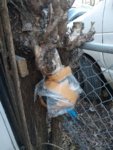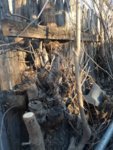cbroad
Omono
I usually use straight chopped sphagnum for air layering, but last year I tried mixing it with at least 50% perlite and was very satisfied with the results.Sphagnum Moss for this years propagating.
No issues with wonky roots other than when they hit the side of the bag and turn downwards.
In my opinion, this is the best substrate to use other than an aggregate; I know I couldn't keep that watered enough during our summers here.
For my purposes, 50/50 sphagnum/perlite works very well, and I'll probably always use this for my future air layers. I'm also using this mix for stratifying seeds, and seems to work pretty well so far...




